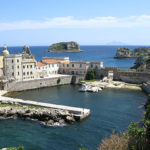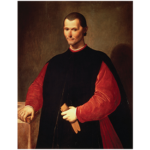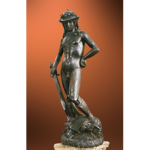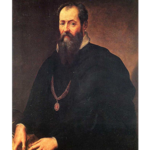About Us
The story of Gold Note is rooted in dedication and talent, starting from the picturesque Florentine hills and branching out globally, with a significant presence in North America. This journey begins with a young Maurizio Aterini, whose life changed forever in the late 1970s when he received a stereo system from his father. This sparked a lifelong passion for audio systems, leading Maurizio to pursue engineering and eventually establish a technical design studio in 1992.
Gold Note’s reputation for excellence began with their meticulously designed B-5 tonearm, which remains a staple on their turntables today. As the company grew, so did its team, eventually including Maurizio’s wife, Elena Basciano, who brought her extensive HR experience from multinational corporations, and Alessio Oronti, who stepped into an executive role.
Recognizing a shift in the market and the opportunities in the expansive North American landscape, especially in the USA and Canada, Gold Note transitioned from serving third-party clients to establishing its own distinct brand in 2012. This strategic pivot was geared towards directly addressing the sophisticated demands of North American audiophiles, who value not only technical excellence but also heritage and design.
Today, more than a decade later, Gold Note has cemented its position in major markets across the U.S. and Canada. The brand is celebrated for its family-oriented approach and Italian aesthetic, appealing to a diverse clientele that values both innovation and tradition. Gold Note stands as a beacon of reliability and sonic quality, continually pushing the boundaries of audio engineering to cater to a discerning North American audience in a crowded and competitive audiophile market.
History of Gold Note's Product Names
Mediterraneo (Turntable)
Origin:
The Mediterranean countries are those that surround the Mediterranean Sea. These are Spain, France, Monaco, Italy, Slovenia, Croatia, Bosnia and Herzegovina, Montenegro, Albania, Greece, Turkey, Syria, Lebanon, Israel, Egypt, Libya, Tunisia, Algeria, and Morocco; Malta and Cyprus are island countries in the sea.
Giglio (Turntable)
Origin:
City coat of arms of Florence derived from the Lily. The arms of Florence show a fleur-de-lis, or Florentine lily. Until 1251 the coat of arm of Florence was a white lily on a red field. But that year the Guelph party drove the Ghibellins out of the city and they inverted the colours of the coat of arm: red lily on a white shield.
Pianosa (Turntable)
Origin:
Pianosa (Italian pronunciation: [pjaˈnoːza]) is an island in the Tuscan Archipelago in the Tyrrhenian Sea, Italy. It is about 10.25 km2 (3.96 sq mi) in area, with a coastal perimeter of 26 km (16 mi).
Valore (Turntable)
Origin: value/worth (play on words, e.g. you get a lot from this rather reasonably priced entry level TT)
Tuscany (Cartridge)
Origin:Tuscany is a region in central Italy with an area of about 23,000 square kilometres (8,900 square miles) and a population of about 3.8 million inhabitants.

Machiavelli (Cartridge)
Origin:
Niccolò Machiavelli, important historical figure of the early Florentine Renaissance, famous writer and politician of the Medici era, author of the treatise The Prince dedicated to Lorenzo de Medici.

Donatello (Cartridge)
Origin:
One of the most famous sculptors of the Renaissance, many of his works are still on display in Florence and elsewhere in Italy.
Vasari (Cartridge)
Origin:
Giorgio Vasari, famous artist and author of the Renaissance and Mannerism, originally from Arezzo, many works in Florence, basically invented the history of art by writing a famous book about the lives of artists from Giotto to Michelangelo.
